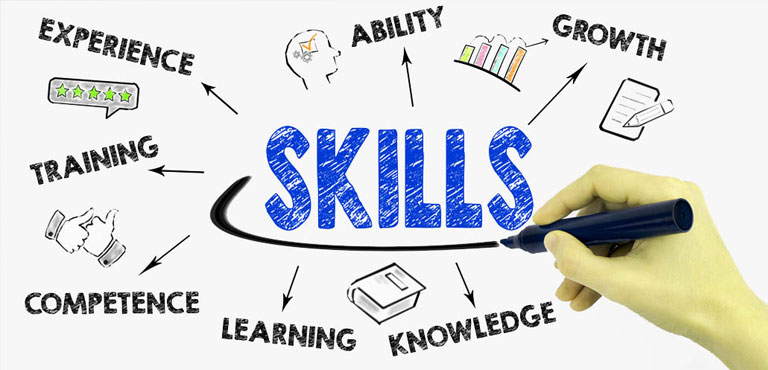According to a 2018 report by the McKinsey Global Institute, by 2030, some 14% of the global workforce—375 million workers—may have to change occupations or industries as a result of disruption from automation and artificial intelligence. McKinsey says the shift is as significant as it was when humans went from predominantly agriculture work to manufacturing, only it’s happening considerably faster, leaving many businesses concerned about the emerging and growing skills gap.
While these reports grab headlines and catch our collective attention, they have a tendency to sensationalize the conversation. Job displacement is real and deserves a thoughtful strategy, but it’s important to remember that an evolving workplace does not mean that human jobs are simply disappearing by the millions. It means the landscape is changing, and now is the time to adapt.
Still, as businesses come to terms with this rapidly changing landscape, the concept of retraining and upskilling employees is becoming less of a hypothetical and more a necessity. In fact, 66% of surveyed executives said they considered the need to address these gaps a top-ten priority. For another 30%, it was in the top five.
Today we look at best practices for retraining and upskilling workers, and how to build a training plan in a way that it becomes a driver of positive change.
Accessibility:
New learning opportunities should be rolled out enthusiastically with clear instructions on exactly how, when and why teams should participate in them. When management teams are eager to embrace a culture of learning, often employee attitudes follow suit. A teacher who is actively participating with her students has a much higher chance of connection than one who simply assigns reading chapters.
Engaging and Practical Curriculum:
Training programs are typically fraught with boredom. But they don’t have to be! Provide different learning modes—some online, some in person, some in group settings, some individual. And use content that is highly practical and applicable to the skills they are building. Create a learning environment that utilizes simulations and interactive experiences when appropriate. This varied pace not only keeps things interesting, but it creates a richer experience that includes the multitude of ways people learn. The learning experience should be as diverse as the workforce itself.
Specific and Specialized Focus:
A key driver of success in any training program is its potential for specialization. According to a separate McKinsey report about closing the skills gap, programs with the highest rates of success are those that focus on “technical, behavioral, and mind-set skills … where on-the-job failure is most likely to occur.” Making specialization a primary focus of your programs ensures you will set your learners up for the highest chance of success in building the much-needed skills required for the future of work.
Preparation and Ongoing Assessments:
Before employees begin their retraining coursework, make them comfortable and excited about what is to come. Prescreen them if necessary to determine job literacy, as appropriate. Then, as employees complete coursework in their field, have regular check-ins wherein assessments can be completed. This provides an opportunity to measure success of the training program as it is being completed. It also allows for course-correction and creates an opportunity to provide more intensive support for those who may need it. Considering upskilling is about reaching people who otherwise are at risk of being forced out the workforce, this is an important factor not to be overlooked.
Technology:
Understanding what skills are needed in the future is no simple task. There are many unknowns to consider for one thing. But more importantly, it’s a difficult assessment to make on an individual basis. It’s a job that requires analysis not only of current skills, but also whether they will be effective for the future. This is a great opportunity to leverage software like a competency management system that can identify and analyze the skills gap. These competency systems are often also integrated with learning management systems (LMS), which allow for enterprise-scale training. These systems are particularly useful for tracking compliance and assessments, and because they are often cloud-based, they allow for 24/7 access across devices.
As we fully immerse ourselves in the digital era, it’s no longer sufficient to hand out workbooks and pencils and expect positive results. Take into consideration how people learn, and how people learn differently from each other. Leverage software where necessary, and create a program that is focused on knowledge building through comprehensive support.
In a secondary post, we will address how the idea of upskilling applies to process automation specifically.




